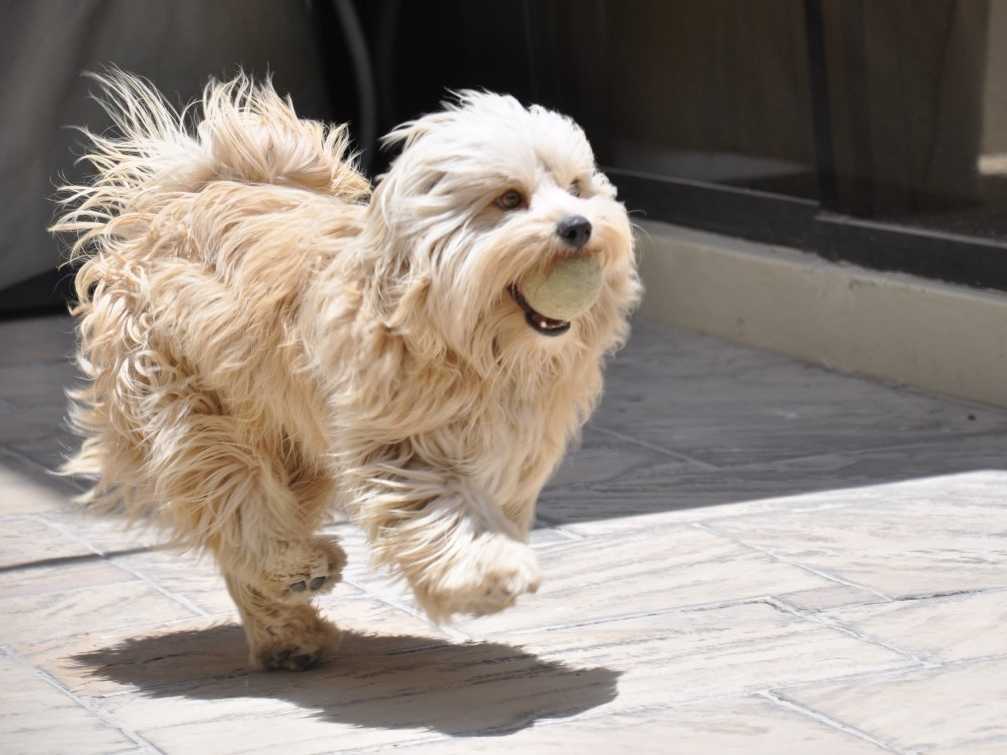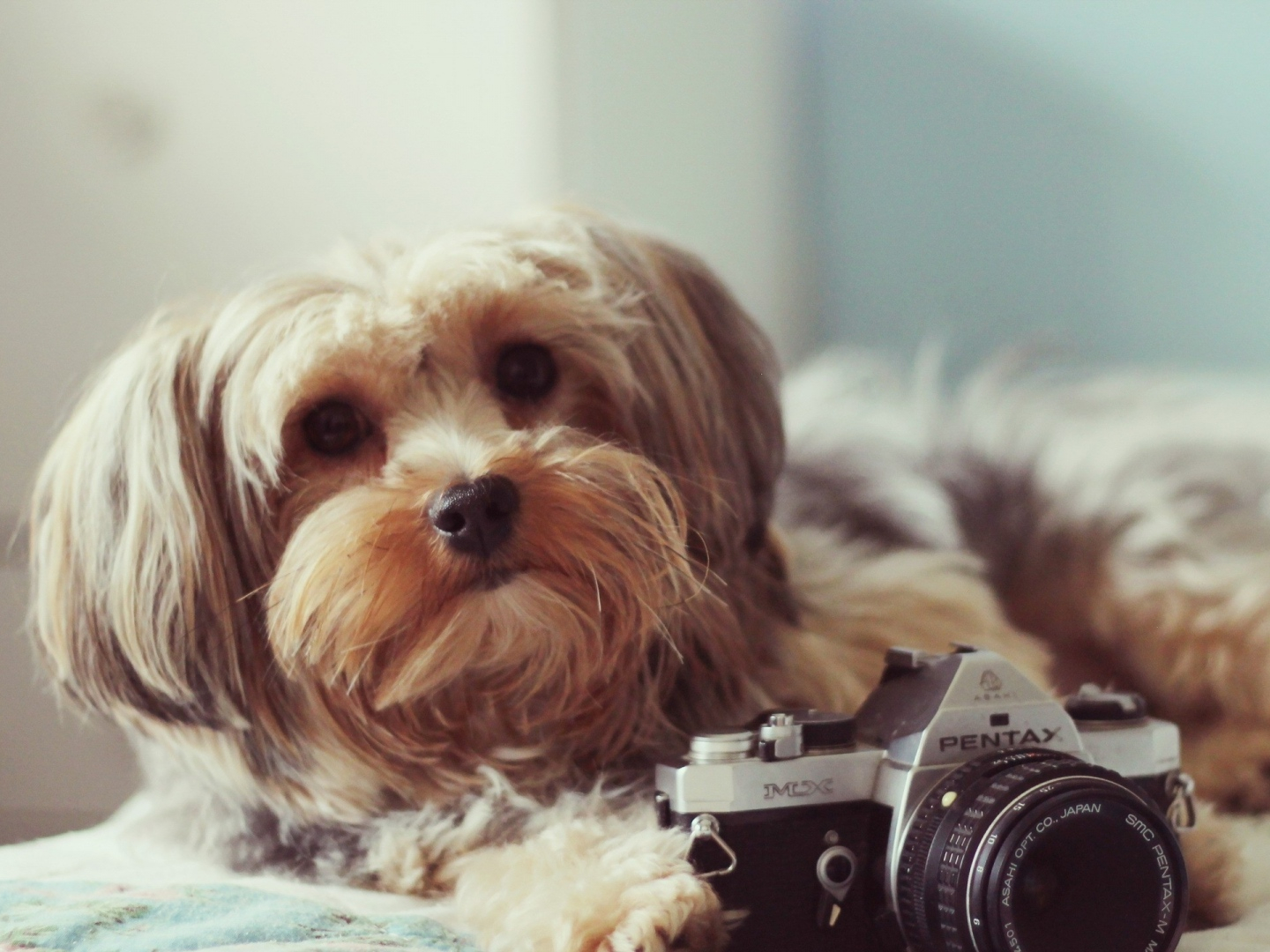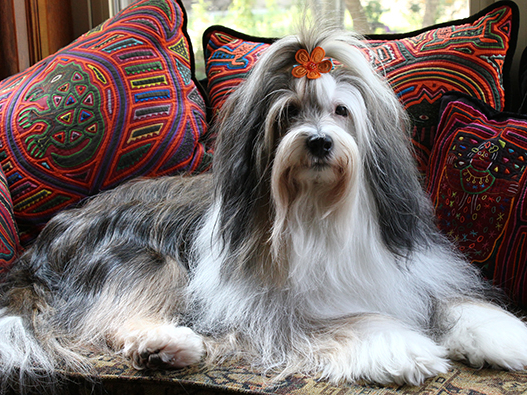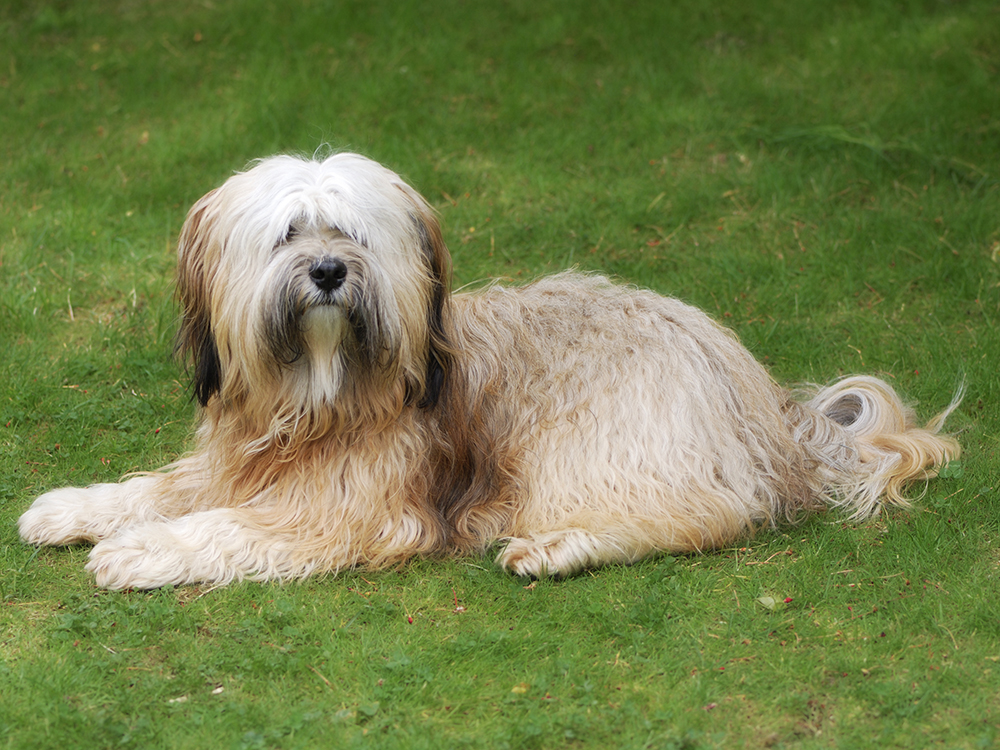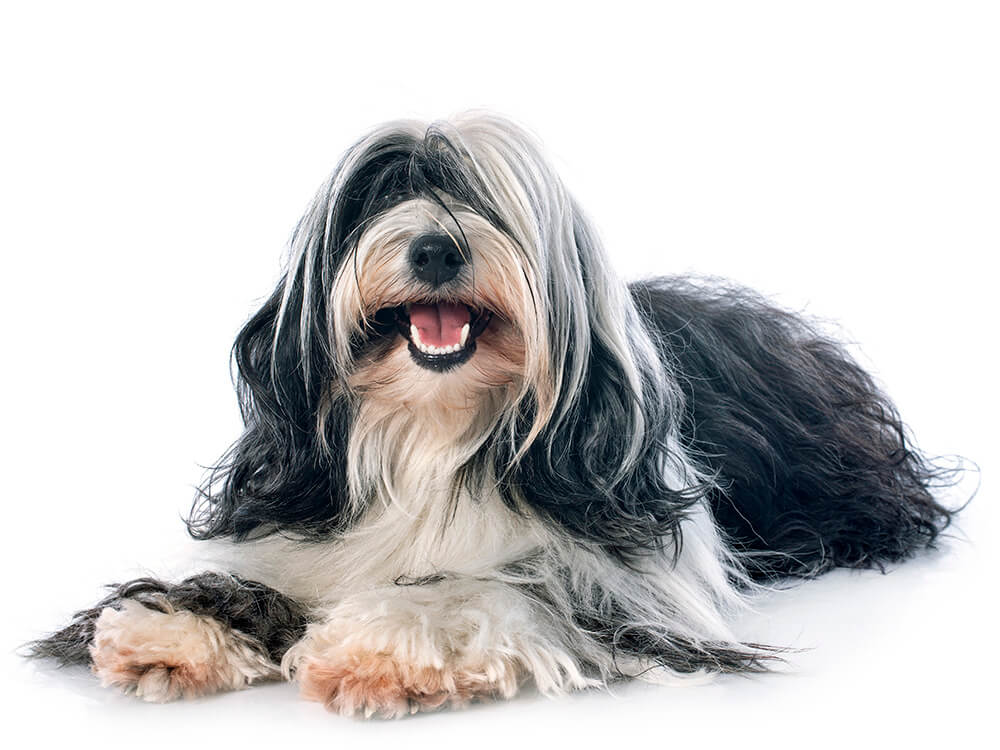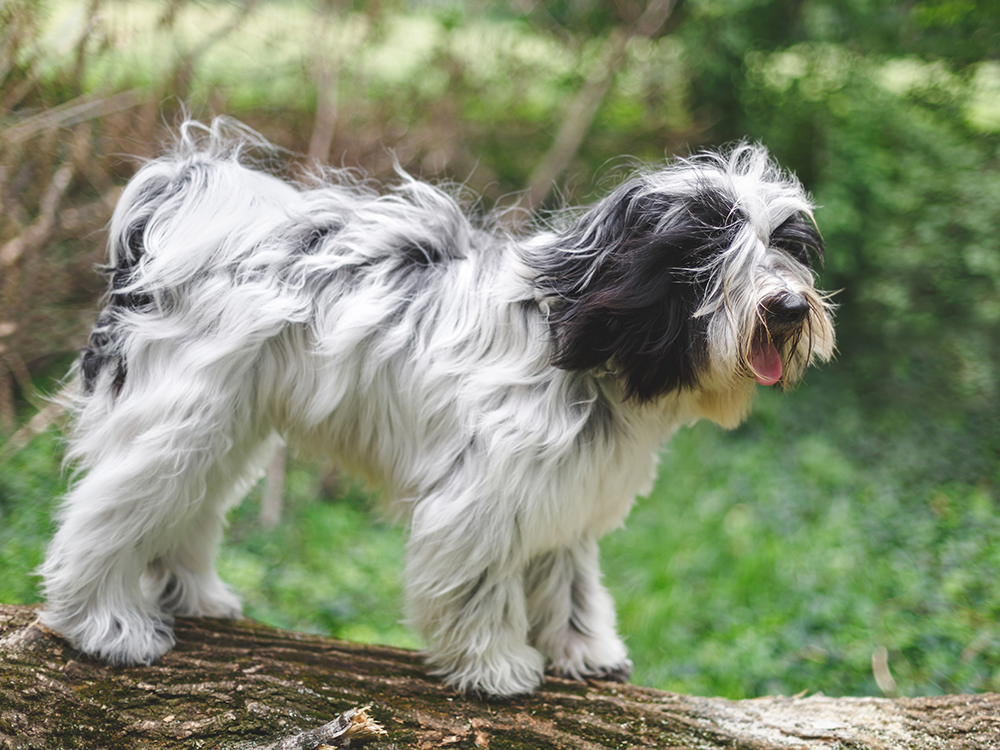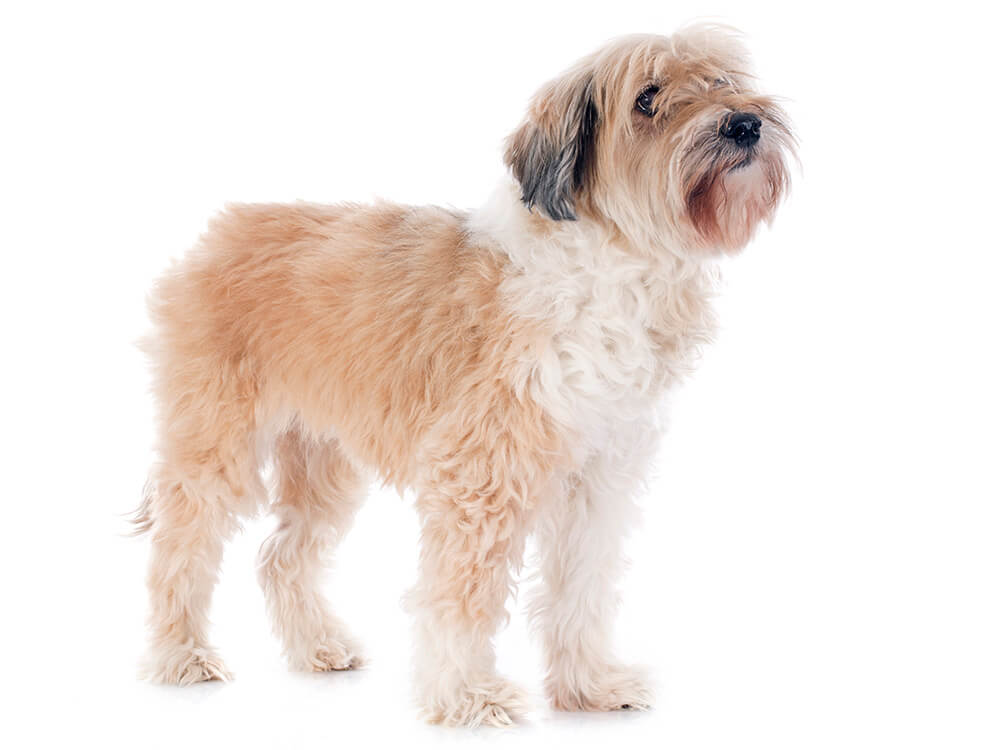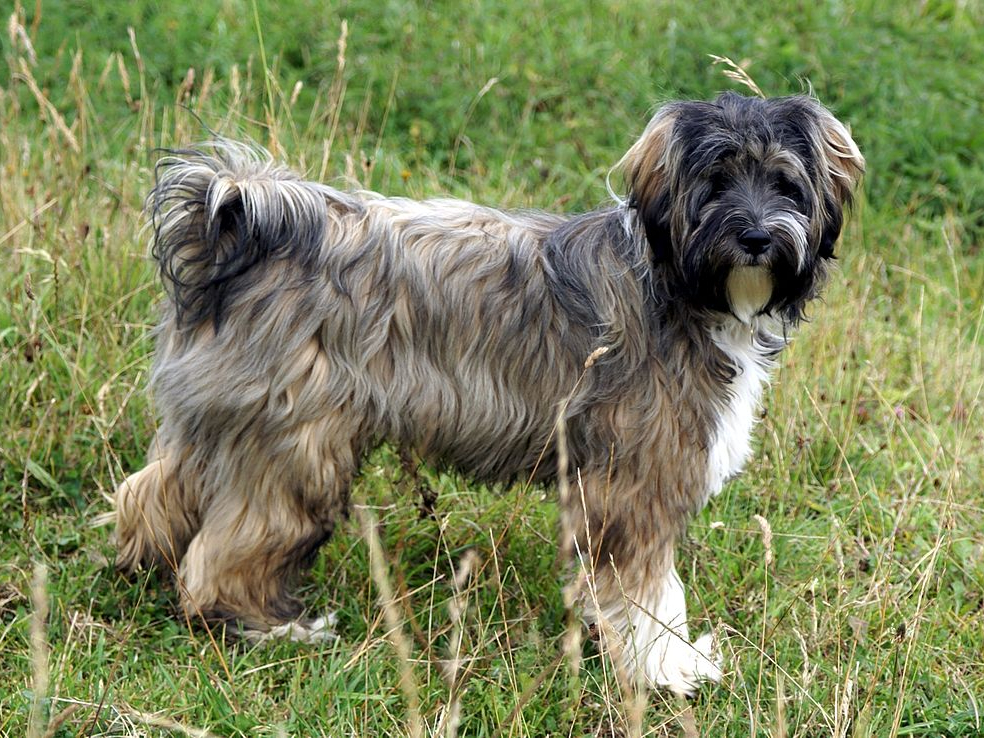
Tibetan Terrier Breed Pictures
Vital Breed Stats
| Height: | 36 - 43 cm M | 36 - 43 cm F |
| Weight: | 8 - 14 kg M | 8 - 14 kg F |
| Breed Group: | Working Dog Group |
| Life Expectancy: | 13 - 15 years |
| KC Registered: | No |
Breed Characteristics
| Size: |  |
| Grooming: |  |
| Exercise Level: |  |
| Trainability: |  |
| Barking Level: |  |
| Good with Children: |  |
| Good with other pets: |  |
| Affectionate: |  |
| Protective: |  |
| Cost to Keep: |  |
Give a thumbs up if you love the Tibetan Terrier

0
More About the Breed
History
The Tibetan Terrier comes from Tibet and has been regarded as a lucky charm in the region. As its country of origin is landlocked, this dog, called Tsang Apso locally, remained purebred for two thousand years. This robust canine has been used in herding livestock, guarding property, and accompanying travellers.
It earned the moniker 'Holy Dog of Tibet' as it is a highly valued pet amongst Tibetan monks and monasteries. The Tibetan Terrier was so precious to Tibetan families and monks that mistreating it is a social taboo and that it never was sold off. Instead, it was given as a gift. The first Tibetan Terriers to reach Western shores were in fact offspring of one.
An English physician, Dr A.R.H. Greig, was given a Tibetan Terrier puppy she named Bunti. The dog was given by a merchant to thank her for a successful operation. The canine’s name was later modified to Bunty.
The doctor exhibited her pet at one of the dog shows in India, where she lived in the 1920s. The judges had never seen such a dog and encouraged her to start breeding it. Dr Greig then later acquired another Tibetan Terrier named Rajah. In 1924, she got her first litter. The second came in the next year.
In 1926, Dr Greig brought three of her Tibetan Terriers to the UK. She continued to breed the dog and later won dog shows with some of those she cared for. The breed was recoginsed by the Kennel Club in 1937.
In 1956, a Tibetan Terrier Club was established after Constance Downey set up the Luneville Kennel in the 1950s. It was only after Dr Greig passed away in the 1970s that the breed became popular in the UK. In 2007, a Tibetan Terrier won Best in Show at the 2007 Crufts.
Appearance
Amongst the Tibetan breed in the Utility Group, this one is the tallest of them all. Standing at about 35–41 cm and weighing 8–14 kg, the Tibetan Terrier’s size is a robust medium. This dog breed’s name is a misnomer as it is actually not a terrier. What inspired the inaccurate labelling was its appearance, which was similar to those in the Terrier Group. The similarity is evident even in Tibetan terrier pictures.
This breed’s body has a well-balanced, squarish look with a strong muzzle, black nose, and large round eyes. It has a fairly long neck and muscular body. Its hindquarters are also muscular and are supported by strong hind legs.
All four of its broad, flat feet are covered in a heavy layer of fur, with tufting in between the toes. These paws act as snowshoes and allow this animal to trudge through snowy terrain with ease. Its furry tail is of medium length and curls over its back. It tends to have a kink at its tip, which is accepted as part of its standard. Its long-haired coat is its most striking feature. Being a double-coated canine, its fur colours and patterns come in a wide range of varieties. However, the liver and chocolate colours are not accepted under the standards of the Kennel Club.
Grooming
Temperament
Intelligence
Feeding
Follow a set feeding schedule consistently and provide the same food to your pet to avoid tummy upsets. However, if you need to change its diet to another type of high-quality food, do so gradually. This allows your dog to adjust accordingly without complications. Puppies must be fed 3–4 times a day, whilst adult ones can be fed twice a day.
For a Tibetan Terrier puppy that is 2–6 months old, feed it with 133–233 g of food daily, depending also on its size and activity level. For one that is 8–10 months old, feed it with 119-201 g of food daily. When it turns twelve months, you can feed it with adult food.
The adult Tibetan Terrier weighing 8–13 kg should be fed about 119–219 g of food daily, taking into consideration its activity level. For those weighing 14 kg and above, the average daily portion ranges from 178 to 235 g.
Health
- Hip Dysplasia
- Progressive Retinal Atrophy
- Primary Lens Luxation
- Allergies
- Chronic Lymphocytic Leukaemia
Exercise
Cost of Ownership
To acquire a well-bred Tibetan Terrier puppy, you may expect to spend at least £500 to £600. Insurance may cost about £20 (basic) to £42 (lifetime) monthly. The food expenses may reach about £20–£30 per month. For vaccinations, boosters, annual checks, and other veterinary costs, pet care expenses may add up to more than £800 per year.
On average, a Tibetan Terrier owner will spend about £50–£80 per month. The insurance costs can also influence these cost estimates. For its lifetime (12–15 years), the costs can range from £7,200 to £14,400 overall. This estimate does not include the expenditures incurred in securing a puppy.
Tibetan Terrier Breed Highlights
- The Holy Dog of Tibet has a wonderful temperament and a lively, friendly nature.
- This breed is suitable as a family pet and is good with other pets.
- Its thick, furry coat needs daily grooming.
- As an intelligent and high-energy dog, it learns quickly and must be mentally stimulated and exercised daily to keep it happy.
- Early socialisation is important for this breed, so it becomes a well-balanced dog.
- Its strong bond with its owners makes it unable to thrive being left alone for long periods.






